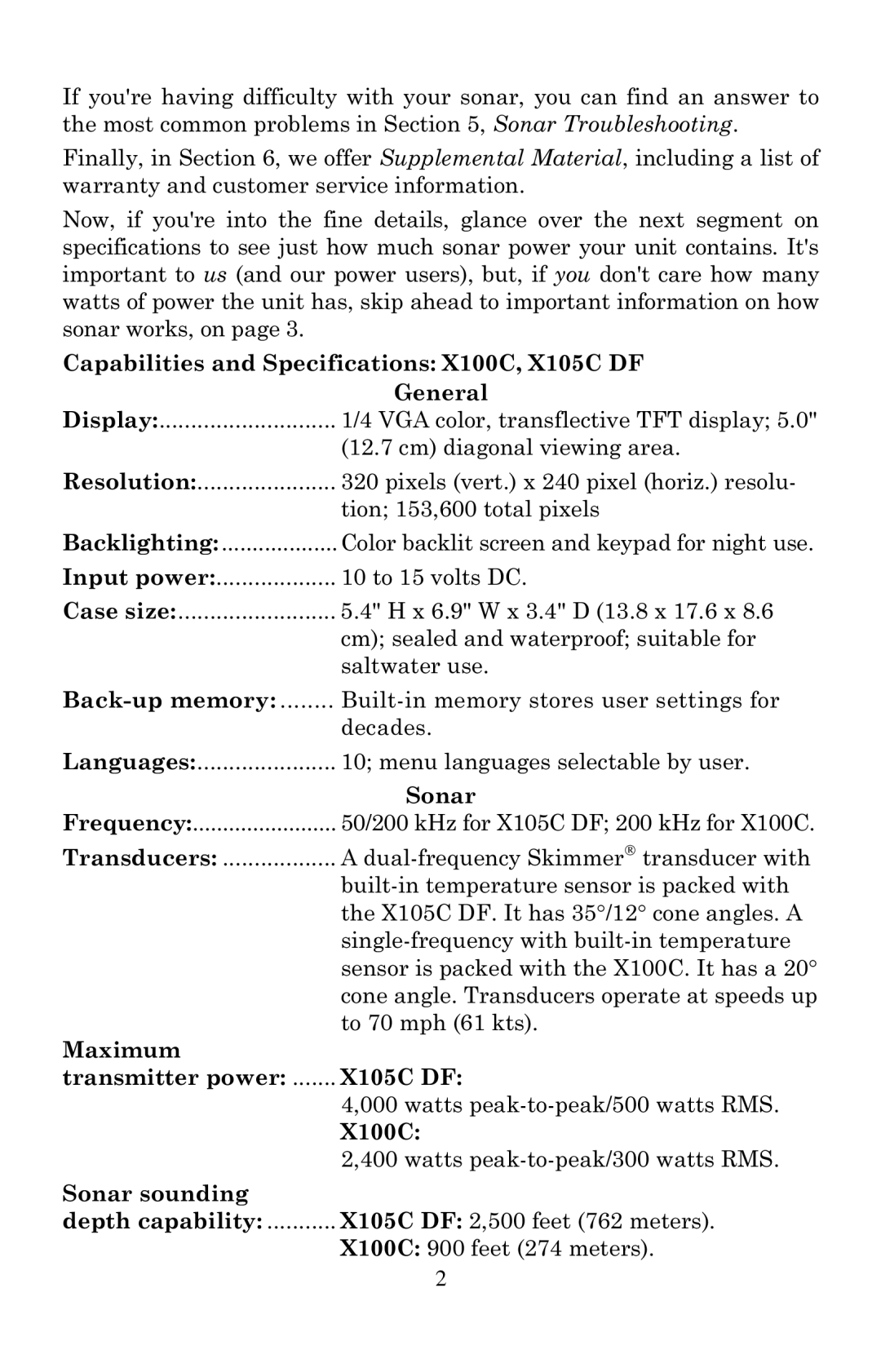If you're having difficulty with your sonar, you can find an answer to the most common problems in Section 5, Sonar Troubleshooting.
Finally, in Section 6, we offer Supplemental Material, including a list of warranty and customer service information.
Now, if you're into the fine details, glance over the next segment on specifications to see just how much sonar power your unit contains. It's important to us (and our power users), but, if you don't care how many watts of power the unit has, skip ahead to important information on how sonar works, on page 3.
Capabilities and Specifications: X100C, X105C DF
| General |
Display: | 1/4 VGA color, transflective TFT display; 5.0" |
| (12.7 cm) diagonal viewing area. |
Resolution: | 320 pixels (vert.) x 240 pixel (horiz.) resolu- |
| tion; 153,600 total pixels |
Backlighting: | Color backlit screen and keypad for night use. |
Input power: | 10 to 15 volts DC. |
Case size: | 5.4" H x 6.9" W x 3.4" D (13.8 x 17.6 x 8.6 |
| cm); sealed and waterproof; suitable for |
| saltwater use. |
| decades. |
Languages: | 10; menu languages selectable by user. |
| Sonar |
Frequency: | 50/200 kHz for X105C DF; 200 kHz for X100C. |
Transducers: | A |
| |
| the X105C DF. It has 35°/12° cone angles. A |
| |
| sensor is packed with the X100C. It has a 20° |
| cone angle. Transducers operate at speeds up |
| to 70 mph (61 kts). |
Maximum |
|
transmitter power: | X105C DF: |
| 4,000 watts |
| X100C: |
| 2,400 watts |
Sonar sounding |
|
depth capability: | X105C DF: 2,500 feet (762 meters). |
| X100C: 900 feet (274 meters). |
2
